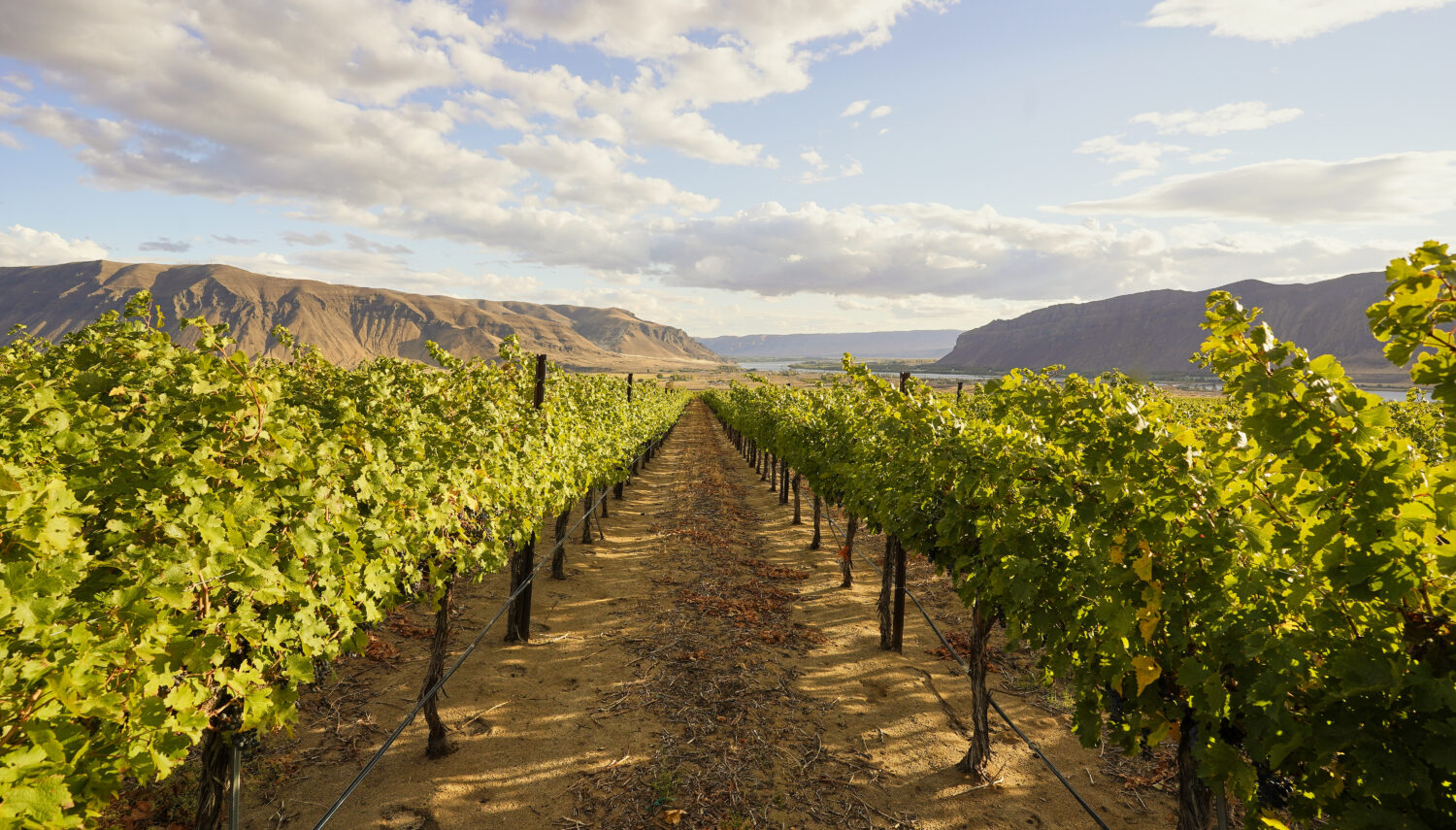SEATTLE (October 30, 2024)—Beverly, Washington is Washington’s newest American Viticultural Area (AVA). On October 29, 2024, the Alcohol and Tobacco Tax and Trade Bureau (TTB) published the final rule for the Beverly, Washington appellation to officially define it as a designated wine grape-growing region.
“The Beverly, Washington AVA is a super-hot, windy location on the Columbia River in central Washington,” said Tom Merkle, Director of Vineyard Operations for Four Feathers Wine Services, who manages three vineyards within the AVA. “The vines produce very small berries with thick skins. As a result, the vineyards deliver intensely complex, rich wines that age well.
The new AVA is located in central Washington, between the Royal Slope to the north and Wahluke Slope to the south. It is wholly contained within the larger Columbia Valley.
A wine grape-growing region must have distinguishing features to qualify as an AVA. Kevin Pogue, Professor of Geology at Whitman College, who wrote the AVA petition for Beverly, Washington, says its defining characteristics are heat, wind, and soils.
- Heat. The appellation is one of the warmest in the state. Beverly, Washington receives a mere five inches of precipitation annually. This is among the lowest numbers in the Columbia Valley, with near maximum rain shadow effect.
- Wind. The AVA is located two miles north of Sentinel Gap, a 1.5-mile break in the Saddle Mountains. Wind accelerates as it passes through Sentinel Gap and then slows. As a result, both average wind and daily maximum speeds are significantly higher compared to nearby Royal Slope. The wind keeps canopy and berry size small and contributes to thicker skins.
- Soils. The appellation is located at the confluence of two major channels of the Missoula Floods. The floodwaters were slowed by the constriction of Sentinel Gap, causing heavier material to settle out. As a result, the soils of the AVA are extremely well-drained. Well-draining soils generally give growers more control over water stress.
The heat, in particular, makes the AVA well-suited to red varieties. The vineyards are predominantly planted to cabernet sauvignon, merlot, malbec and cabernet franc.
“All in all, it’s a place to grow robust red wines,” Pogue said.
At 2,415 total acres, the Beverly, Washington AVA is one of the smallest appellations in the state. It gets its name from an unincorporated town within its boundaries, which was established when railroad lines were first run through the region in the early 1900s.
“Beverly, Washington marks our state’s 21st AVA, the last seven approved since 2020,” said Kristina Kelley, Executive Director of the Washington State Wine Commission. “Each new AVA is a sign of continued growth and maturity for the Washington wine industry.”
Beginning November 29, 2024, wineries may submit a Certificate of Label Approval (COLA) request to the TTB for a label using Beverly, Washington AVA as the appellation of origin.
“We look forward to seeing the Beverly, Washington AVA on labels shortly,” Kelley said.
Resources for Media:
- Final Rule: Beverly, Washington AVA, TTB
- Beverly, Washington AVA Profile, Washington State Wine Commission
- Photos of Beverly, Washington AVA, courtesy Four Feathers Wine Services
- Washington AVA Map, Washington State Wine Commission
About the Washington State Wine Commission:
The Washington State Wine Commission (WSWC) represents every licensed winery and wine grape grower in Washington State. Guided by an appointed board, WSWC provides a marketing platform to raise positive awareness about the Washington wine industry and generate greater demand for its wines. Funded almost entirely by the industry through assessments based on grape and wine sales, WSWC is a state government agency, established by the legislature in 1987. To learn more, visit www.washingtonwine.org.
MEDIA CONTACT:
Heather Bradshaw, Communications Director, Washington State Wine Commission
(206) 495-5844 / hbradshaw@washingtonwine.org
# # #

